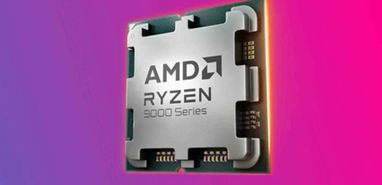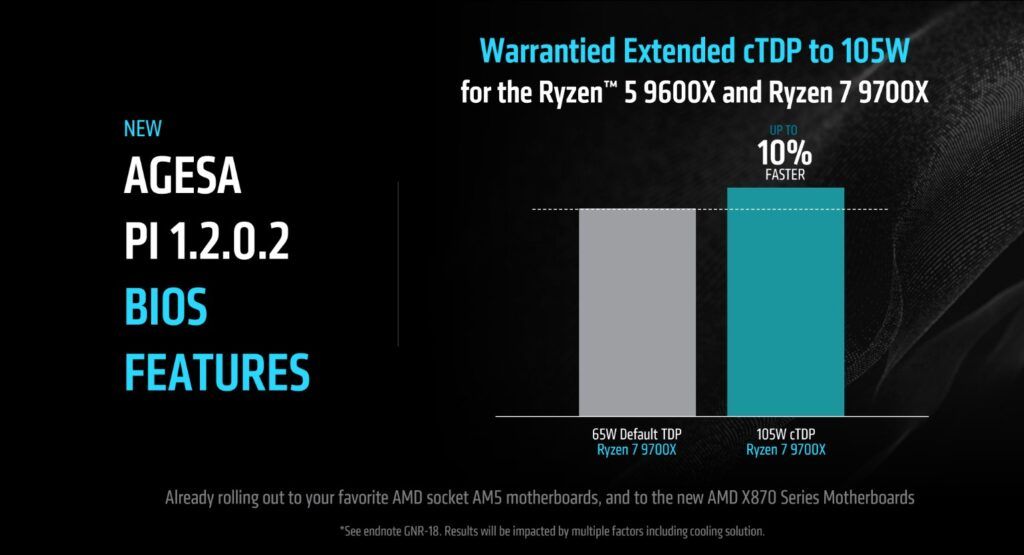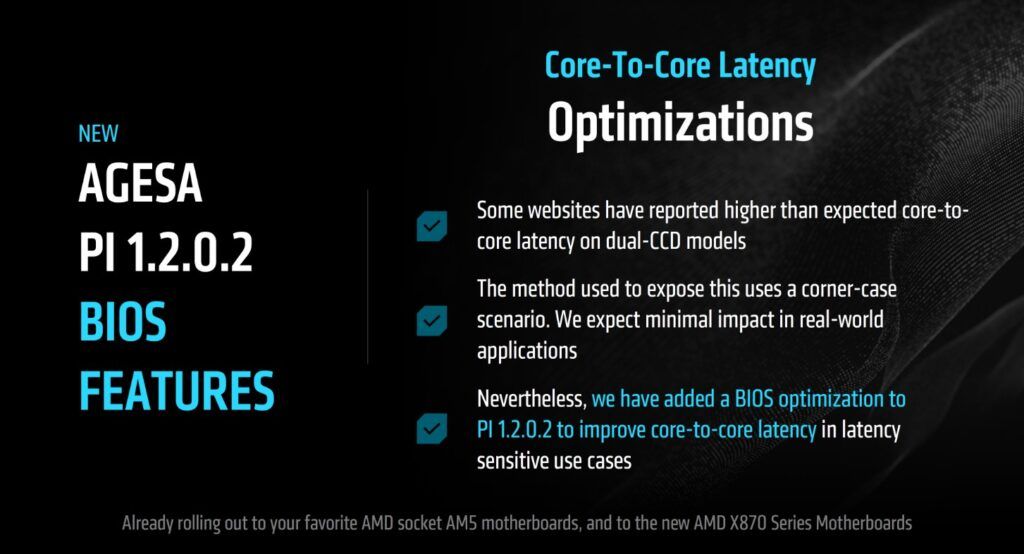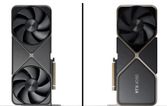
AMD has confirmed that the “105W TDP” mode for Ryzen 9000 CPUs, integrated into the AGESA 1.2.0.2 firmware, will be fully supported under warranty. This new mode brings several upgrades to users, enhancing performance and reliability.
Since the launch of AMD Ryzen 9000 Zen 5 desktop CPUs, the company has introduced various enhancements to address some early limitations while adding new features to improve the overall experience. Today, AMD provides a summary and additional updates to make the Zen 5 desktop processor experience even better.

One of the standout features is the introduction of the “105W cTDP” mode for the Ryzen 7 9700X and Ryzen 5 9600X CPUs. Initially hinted in June, AMD later confirmed this higher TDP mode, offering users more power for both Ryzen 7 and Ryzen 5 processors. Early testing has shown double-digit performance gains in applications, along with noticeable improvements in gaming.
The 105W configurable TDP mode increases the power by 62% compared to the base 65W, giving users the option for extra performance. This feature is available through the AGESA 1.2.0.2 firmware, which is already rolling out to several motherboard manufacturers for 600-series and 800-series AM5 motherboards.

The key benefit is that this new 105W mode is fully supported under AMD’s warranty, allowing users to take advantage of the additional power without voiding their warranty. This move from AMD shows their commitment to providing more performance for their customers while maintaining support.
Another major update is the introduction of automatic Windows updates, eliminating the need for manual downloads to get the latest branch prediction optimizations on Ryzen 9000 Zen 5 CPUs. These updates are automatically rolling out in Windows 11, including build 22631.4112 for 23H2 and build 26100.1301 for 24H2. Users can check their Windows version to ensure the latest optimizations are applied.

AMD has also worked to address core-to-core latency issues. The AGESA PI 1.2.0.2 firmware includes improvements that reduce latency in performance-sensitive cases. While real-world applications might see minimal effects, these changes offer significant improvements in gaming and synthetic benchmarks. Games like Metro Exodus, Starfield, and Borderlands 3 have shown enhanced performance, and benchmarks such as 3DMark Time Spy have demonstrated noticeable gains.

The X870E and X870 motherboards have also been released, now available at major retailers. These motherboards are pre-loaded with the AGESA 1.2.0.2 firmware, offering the best performance while supporting higher-frequency DDR5 memory, up to 8000 MT/s EXPO and beyond. Manufacturers like G.Skill have pushed EXPO profiles up to 9000 MT/s, a substantial upgrade over the previous X670E motherboards. These improvements are made possible by AMD’s dedicated memory team.

With these updates, AMD has significantly enhanced the performance and usability of the Ryzen 9000 Zen 5 desktop CPUs, ensuring a better experience for all users. From the introduction of the 105W mode to improved Windows updates and gaming performance, AMD continues to evolve its product line for the better.








By Andrej Kovacevic
Updated on 9th March 2025